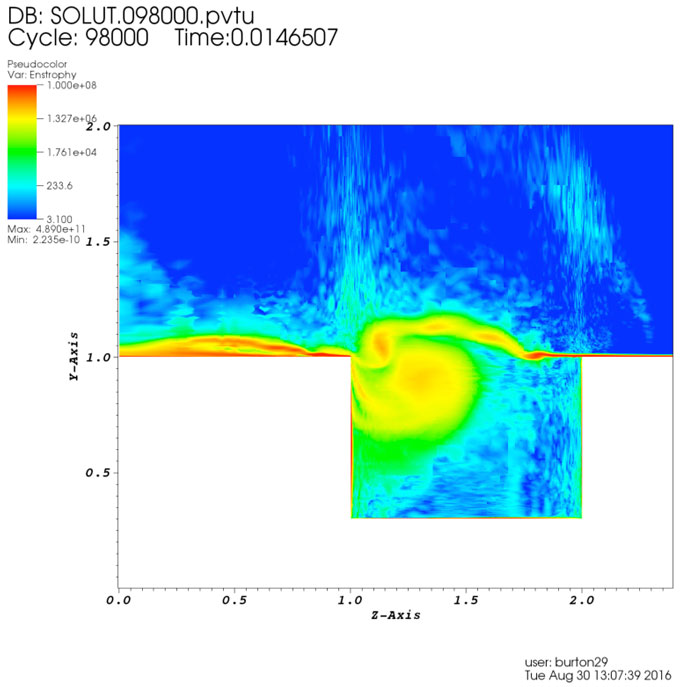Stephen Ammons (16-ERD-049)
Project Description
High-speed turbulent airflow, such as exists around a high-speed aircraft or in a gas-cooled, high-power laser gain cell, generates rapid fine-scale density and index fluctuations that dramatically degrade both imaging and beam propagation. This turbulent airflow remains a vexing challenge in high-power laser propagation, laser communications, and astronomical imaging. It is a key technical barrier that, if resolved, would lead to breakthroughs in laboratory-based, high-average-power laser systems and aircraft-based directed energy weapons systems; optical communication systems; and intelligence, surveillance, and reconnaissance systems. Traditional adaptive-optics-based approaches have not led to significant progress. We intend to explore the use of adaptive optics to compensate for deep, rapidly flowing turbulence in aircraft-mounted lasers and telescopes. We also plan to develop a conceptual design study of the predictive adaptive optics system, an ensemble of computational fluid dynamics models spanning the above applications, and a set of requirements for subsystems. The broader impact of this work is rooted in the wide applicability of adaptive optical techniques beyond laser propagation. The system architectures we define may be directly applied to aircraft-based imagers and active remote-sensing systems, air-to-air and air-to-ground laser communication systems in the supersonic environment regime, and lasers for spacecraft propulsion. Our research will have fundamental relevance for adaptive optics on extremely large telescopes and biological imaging through living tissue, both of which involve three-dimensional distortion media necessitating tomographic, multi-beacon wave-front sensing.
We expect to provide a physics-based assessment of the feasibility and cost of using modern adaptive optics techniques and algorithms to compensate for deep turbulence effects on laser projection and imaging from aircraft. The proposed study will proceed through two phases. The first, an initial definition phase, will select the most promising application scenarios; set boundaries on geometric constraints such as altitude, flow speed, and turret design; and define top-level performance requirements. During this phase, we will also develop a computational fluid dynamics model of the boundary-layer turbulence for each scenario. In the second phase, the subsystems, predictive algorithms, and integrated system designs will be advanced to the conceptual design level, with basic verification that the wave-front error budget is practical. We expect to (1) model boundary-layer turbulence with high fidelity, incorporating state-of-the-art turret design; (2) perform a conceptual design study and simulation of the adaptive optics system incorporating these models; and (3) derive subsystem requirements from the resulting performance metrics. Armed with real-world data and an experienced team, Lawrence Livermore will be prepared to field fully engineered design studies for laser-propagation systems in aircraft. The Laboratory will also be positioned to design similar adaptive optics architectures for astronomical systems, including adaptive optics and other tomographic systems for astronomical observatories.This project will draw on significant experience in adaptive optics system design and computational fluid dynamics modeling at LLNL.
Mission Relevance
Stable imaging and laser propagation through deep turbulence are important for a range of applications in astronomy, remote sensing, and communications for the Laboratory's national security mission. Our research supports the Laboratory's competency in lasers and optical science and technology for the defense and aircraft-based active remote-sensing systems used for material detection and assessments of treaty compliance. The project also leverages the Laboratory's considerable high-performance computing, simulation, and data science capabilities to understand supersonic turbulent flow in aerospace systems.
FY16 Accomplishments and Results
In FY16 we (1) defined the boundary constraints for promising applications, (2) characterized the state of the art in turret design and suppression of aero-optical turbulence, and (3) began construction of computer-aided design models of candidate turrets and defined computational runs, shown in figure.






